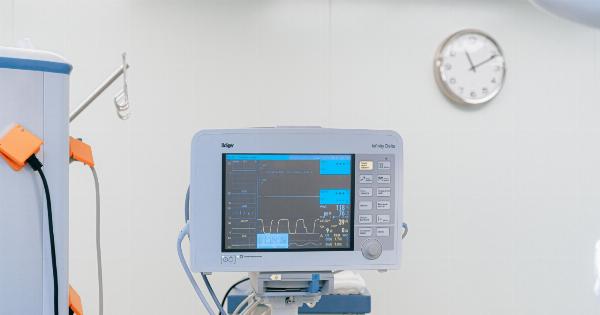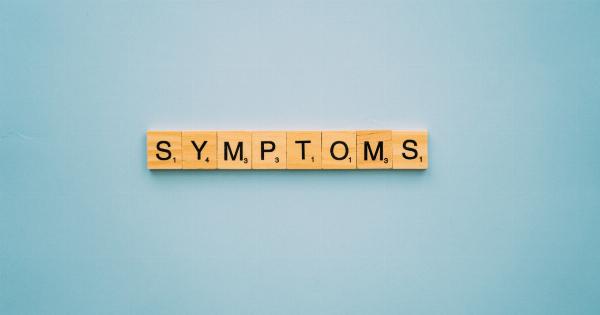Sleep is an essential part of our daily routine, allowing our bodies and minds to recharge and rejuvenate.
However, did you know that sleep can also provide valuable insights into your overall health? Research has shown a connection between sleep disturbances and various health conditions, including cardiovascular diseases like atherosclerosis. Atherosclerosis is a condition characterized by the buildup of plaque in the arteries, leading to restricted blood flow and increased risk of heart attacks and strokes.
In this article, we will explore the warning signs of atherosclerosis that may manifest during sleep and why paying attention to these signs is crucial for your overall well-being.
1. Snoring
If you or your sleep partner snores loudly on a regular basis, it could be a sign of atherosclerosis.
Snoring occurs when the airflow through the passages at the back of the throat is partially blocked, resulting in vibrations and the familiar snoring sound. Researchers have found a link between chronic snoring and an increased risk of developing atherosclerosis. The turbulent airflow caused by snoring can cause damage to the inner walls of the arteries, promoting the formation of plaque deposits.
2. Obstructive Sleep Apnea (OSA)
Obstructive sleep apnea (OSA) is a sleep disorder characterized by repeated pauses in breathing during sleep. These pauses occur due to a complete or partial obstruction of the airway, leading to oxygen deprivation.
OSA has been strongly associated with atherosclerosis and other cardiovascular conditions. The repeated episodes of oxygen deprivation and the stress it places on the cardiovascular system can contribute to the development and progression of atherosclerosis.
Symptoms of OSA include loud snoring, gasping for air during sleep, daytime fatigue, and morning headaches.
3. Restless Leg Syndrome (RLS)
Restless leg syndrome (RLS) is a neurological disorder characterized by uncomfortable sensations in the legs, often accompanied by an uncontrollable urge to move them. RLS can cause sleep disturbances, leading to fragmented sleep and daytime fatigue.
The association between RLS and atherosclerosis is still under investigation, but some studies have suggested a possible link. It is believed that the neurovascular dysfunction associated with RLS may contribute to the development of atherosclerosis and other vascular diseases.
4. Insomnia
Insomnia is a sleep disorder characterized by difficulty falling asleep, staying asleep, or both. It is estimated that around one-third of adults experience symptoms of insomnia.
Chronic insomnia has been linked to an increased risk of developing cardiovascular diseases, including atherosclerosis. The exact mechanism underlying the link between insomnia and atherosclerosis is not yet fully understood.
However, researchers believe that the increased activation of the body’s stress response system and alterations in blood pressure regulation associated with insomnia may contribute to the development of atherosclerosis.
5. Excessive Daytime Sleepiness
Excessive daytime sleepiness (EDS) refers to an overwhelming feeling of drowsiness and the urge to fall asleep during the day, even after adequate nighttime sleep.
EDS can significantly impair daily functioning and may be an indicator of an underlying sleep disorder or other health conditions. Several studies have shown a correlation between EDS and the presence of atherosclerosis. The disrupted sleep patterns and inadequate rest during sleep can contribute to the development and progression of atherosclerotic plaques.
6. Hypertension
Hypertension, or high blood pressure, is a common health condition that affects millions of people worldwide. Uncontrolled hypertension is a significant risk factor for developing atherosclerosis.
During sleep, blood pressure naturally decreases, allowing the cardiovascular system to rest. However, individuals with hypertension may experience a blunted or abnormal drop in blood pressure during sleep, known as non-dipping.
Non-dipping blood pressure patterns have been associated with an increased risk of atherosclerosis and cardiovascular events.
7. Sleep-Disordered Breathing
Sleep-disordered breathing encompasses a spectrum of breathing abnormalities during sleep, ranging from mild snoring to severe obstructive sleep apnea.
These breathing abnormalities can disrupt the normal sleep architecture and impair the body’s ability to repair and regenerate. Sleep-disordered breathing, especially when left untreated, can contribute to the development and progression of atherosclerosis.
The intermittent decrease in oxygen levels during breathing pauses can trigger various physiological responses that promote inflammation and plaque formation.
8. Daytime High Heart Rate
Monitoring your heart rate during sleep can provide valuable insights into your cardiovascular health. During atherosclerosis, the heart has to work harder to pump blood through narrowed arteries.
This increased workload can result in an elevated heart rate during sleep, which persists even during periods of rest. A consistently high heart rate during sleep may indicate compromised cardiovascular health and potential atherosclerotic changes in the arteries.
9. Poor Quality of Sleep
Poor quality of sleep, characterized by frequent awakenings, difficulty staying asleep, or non-restorative sleep, may be an early indicator of atherosclerosis.
Research has shown that individuals with atherosclerosis are more likely to experience disrupted sleep and have lower sleep efficiency compared to those without the condition. The underlying mechanisms linking poor sleep quality and atherosclerosis are still being investigated, but it is hypothesized that oxidative stress and inflammation play a role.
10. Daytime Cognitive Impairment
While atherosclerosis primarily affects the cardiovascular system, numerous studies have shown its impact on cognitive function. This includes impairments in memory, attention, and executive function.
Sleep disturbances associated with atherosclerosis, such as sleep apnea or fragmented sleep, can contribute to daytime cognitive impairment. Disrupted sleep patterns prevent the brain from going through essential restorative processes, impacting cognitive performance and increasing the risk of cognitive decline.






























